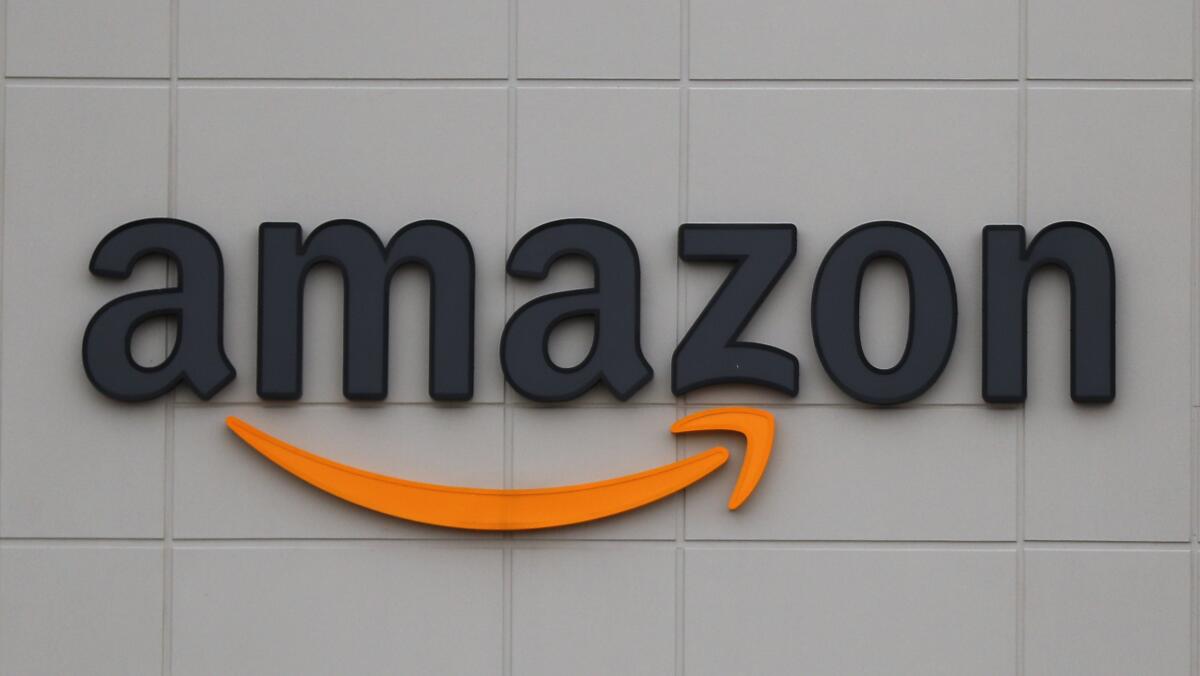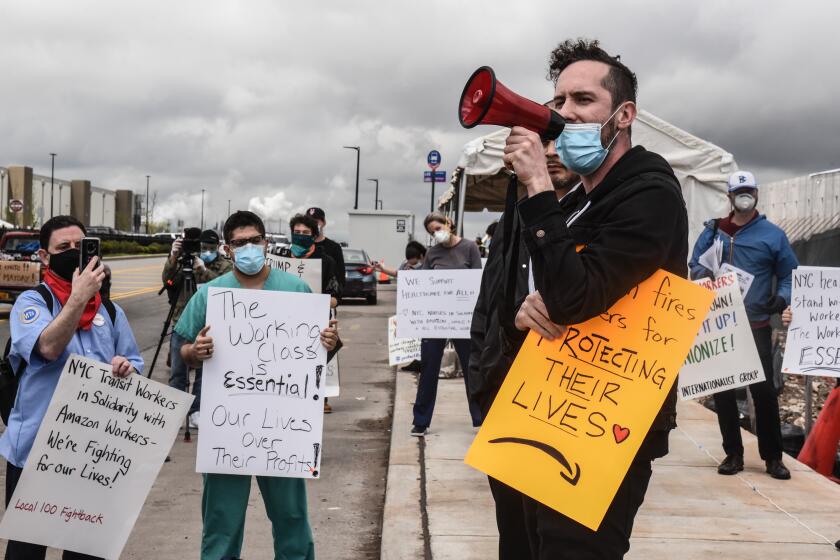Amazon workers say Prime Day rush breaks pandemic safety vows

- Share via
Amazon.com Inc. has recklessly reinstated dangerous warehouse productivity quotas despite telling a judge that it was suspending them during the pandemic, workers said in a court filing.
“Amazon has not been honest and forthcoming,” employees at a warehouse in Staten Island, N.Y., told the judge handling their lawsuit, which alleges that the company’s “oppressive and dangerous” policies violated public-nuisance laws and exacerbated COVID-19 hazards.
Although Amazon says worker safety is its top priority, employees at several facilities in different states claim their well-being takes a back seat to quickly shipping customers’ orders.
In July, Amazon provided the court a message it had sent to employees and posted in bathrooms at the Staten Island facility, telling them they wouldn’t be disciplined for falling short of the company’s quotas for how many tasks they complete each hour. Workers were also assured that time spent on safety measures such as washing their hands wouldn’t be counted against them under Amazon’s “time off task” policy, which restricts the number of unproductive minutes allowed in their day.
The company also submitted a statement by a U.S. human resources director that the more permissive policy began in March, when because of COVID-19 the company “ceased providing productivity rate feedback to associates and imposing any discipline related to low productivity rates.” Workers said the July message was the first time they heard of any such change, and in response to it they withdrew their request for a preliminary injunction in their lawsuit.
But in their new filing, the plaintiffs allege that in the lead-up to Prime Day, Amazon’s self-created, labor-intensive annual promotional holiday that started Tuesday and ends Wednesday, the company has once again been hassling employees about productivity, and warning them that slowness could get them terminated. One Staten Island employee got “verbal coaching” from a manager for falling short, and management notified staff on a white board that “productivity feedback” was being restored, according to one worker’s account included in the filing.
Amazon acknowledged reinstating performance quotas and said workers still have adequate time to wash their hands and take other precautions.
“We have reinstated a portion of our process where a fraction of employees, less than 5% on average, may receive coaching for improvement as a result of extreme outliers in performance,” company spokeswoman Rachael Lighty said. “All of our measures continue to provide additional time for associates to practice social distancing, wash their hands and clean their work stations whenever needed.”
Prime Day has become the starting point of the holiday shopping season, which will look vastly different this year because pandemic-wary shoppers will avoid big store sales typically used to attract crowds. About half of shoppers plan to do most or all of their shopping online, according to a Harris Poll conducted with Bloomberg — demand that will strain Amazon’s warehouses and delivery stations.
Amazon has faced criticism as it has scrambled to remain open through the pandemic and hire enough people to meet surging demand. Its vast network of warehouses has become a lifeline for people who want to avoid walking into stores, but workers risk getting infected and potentially bringing the disease home. Last week, the California Department of Industrial Relations fined Amazon $1,870 for failing to train workers at two Southern California warehouses on how to reduce COVID-19 exposure.
The company has said it has updated more than 150 of its processes to protect its employees laboring through the pandemic — including additional paid time off, cleaning, mask distribution and social distancing — and is ramping up an in-house coronavirus testing program.
On Oct. 1, Amazon disclosed that almost 20,000 of its U.S. employees have tested positive for the coronavirus, while saying the infection rate was lower than the general population’s. In legal filings, the company has denied wrongdoing, called the New York lawsuit an effort to “exploit the pandemic” and said that under federal law the workers’ claims should be brought to the Occupational Safety and Health Administration rather than to court.
Productivity quotas have been a long-running flashpoint at Amazon. In 2018, Amazon warehouse workers in Minnesota organized and rallied to demand more lenience during the Ramadan fast, which that year overlapped with the lead-up to Prime Day. Back then, collective protests by U.S. Amazon employees were uncommon. This year, COVID-19 concerns have inspired a wave of walkouts and demonstrations, beginning with one in March at the Staten Island warehouse.
‘I quit in dismay at Amazon firing whistleblowers who were making noise about warehouse employees frightened of Covid-19,” wrote Tim Bray.
Plaintiff Derrick Palmer said that over the last month, supervisors have repeatedly notified him and other Staten Island employees that production quotas were being reinstated as of October. “I said, ‘You know the pandemic is still going on?’” Palmer recalled in an interview.
“It’s like business over safety” Palmer said. “I’m just kind of sad that they would resort to this and throw all the safety measures out the window.”
More to Read
Inside the business of entertainment
The Wide Shot brings you news, analysis and insights on everything from streaming wars to production — and what it all means for the future.
You may occasionally receive promotional content from the Los Angeles Times.











